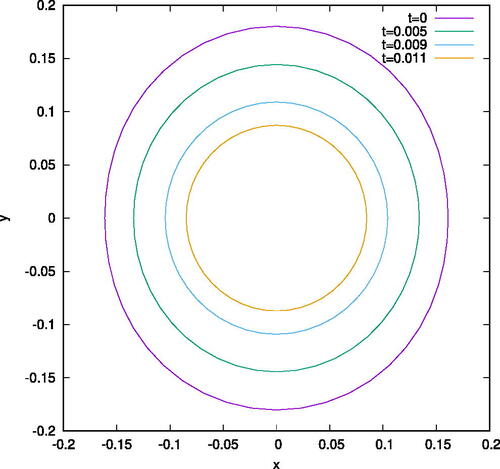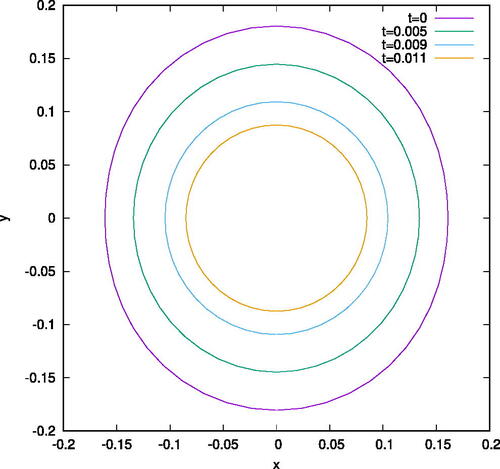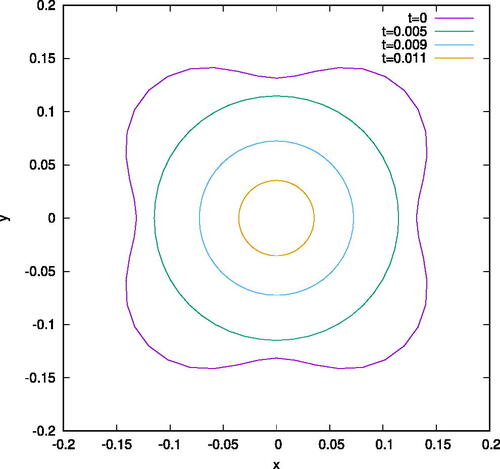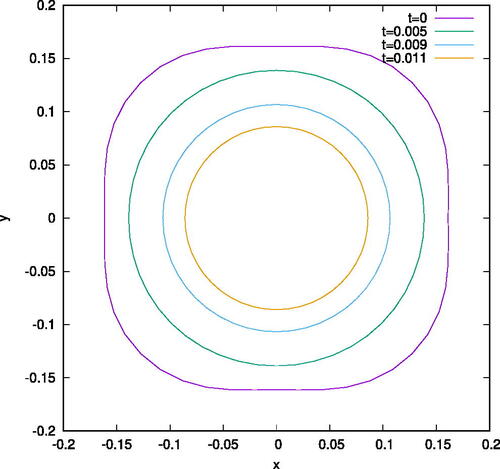Figures & data
Figure 1: A MCF solution forming a degenerate neckpinch at spatial infinity with the curvature at the tip (on the left) blowing up at a Type-II rate [Citation2–3].
![Figure 1: A MCF solution forming a degenerate neckpinch at spatial infinity with the curvature at the tip (on the left) blowing up at a Type-II rate [Citation2–3].](/cms/asset/f6547f27-0cb0-45f1-a155-a4ce3d76b212/uexm_a_2201958_f0001_b.jpg)
Figure 2: Numerical simulation of a MCF solution in the Near Class. Rotating each colored curve around the z-axis generates the hypersurface at the corresponding time. (The coordinates z and r are defined on page 3 below.) As the Type-II singularity develops, the dimple disappears.
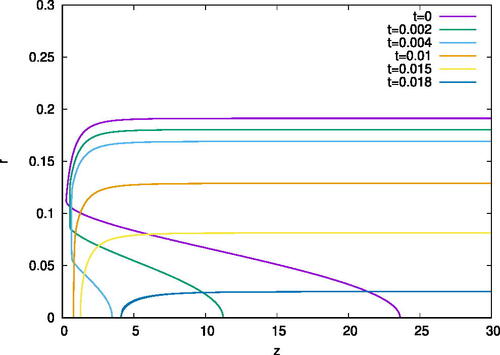
Figure 3: Numerical simulation of a MCF solution in the Far Class. Rotating each colored curve around the z-axis generates the hypersurface at the corresponding time. As the Type-I singularity develops, the dimple becomes a neckpinch.

Figure 4: A simulated three-dimensional graph of angular dependent initial embedding for Near Class initial data in a neighborhood of the tip.
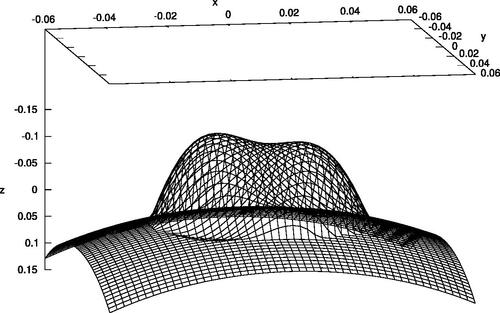
Figure 5: A colored heat map of the initial data represented in . The colors correlate with the graph height.

Figure 6: A colored heat map of the mean curvature flow of the initial data depicted in . It is clearly becoming rounder.
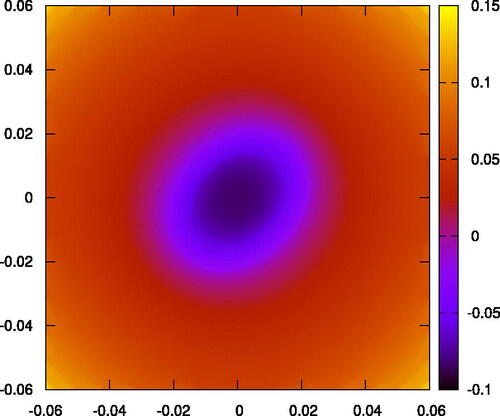
Figure 7: A colored heat map of the mean curvature flow with initial data from at a later time. This time, the angular dependence is gone.
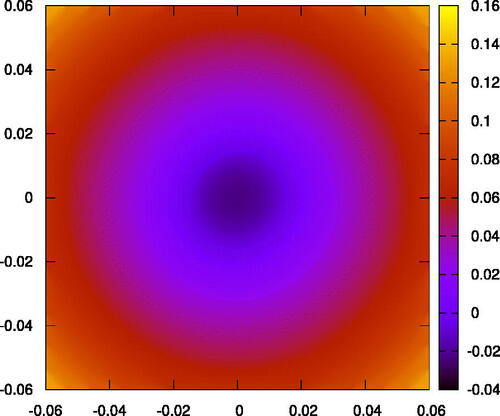
Figure 8: Vertical cross-sections of the mean curvature flow for Far Class initial data at successive times, with angular dependence. These cross-sections are chosen to be the location of the developing neck pinch. The loss of the angular dependence is evident.
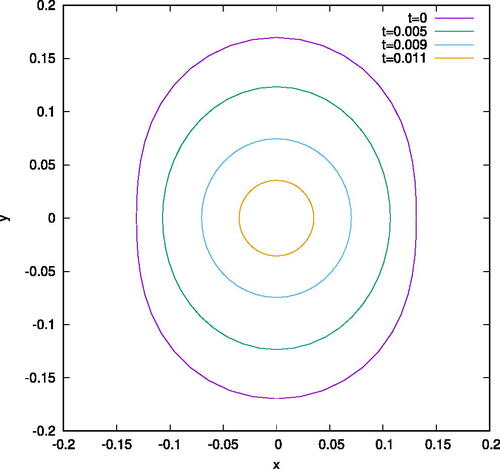
Figure 9: Vertical cross-sections of the MCF for the same initial data in , but with the cross-sections obtained to the left of the neck pinch.
